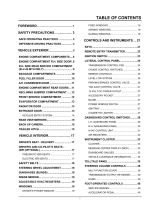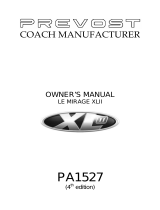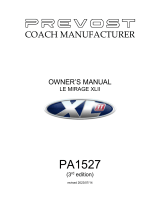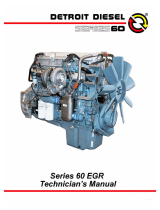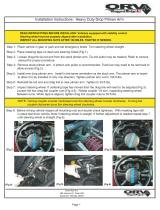
Section 01: ENGINE
01-8
4. DECEL: Will cancel the cruise temporarily
and let the vehicle coast. Set speed is still in
memory for resume.
For additional information, see the "Operator's
Manual" or the "Owner's Manual".
4.4 DIAGNOSTIC SYSTEM ACCESSORIES
(DSA)
The DDEC IV engine Diagnostic System
Accessories include the following:
• Check Engine telltale light;
• Stop Engine telltale light;
• Stop Engine Override switch;
• Diagnostic Data Link (DDL) connectors.
4.4.1 Check Engine Telltale Light
The Check Engine telltale, mounted on the
telltale light panel indicates that a problem has
been detected and that a code has been stored
in the ECM memory. This light also has a 5-
second bulb check when the ignition is first
turned on. The Check Engine telltale illuminates
when the temperature at coolant sensors
exceeds 217°F (103°C) and the temperature at
oil sensors exceeds 260°F (127°C). When
sensors reach those temperatures, DDEC starts
to decrease engine power linearly.
4.4.2 Stop Engine Warning Light
This light, also mounted on the telltale light
panel, illuminates to indicate that a major engine
problem is occurring (with the exception of a 5-
second bulb check when the ignition is first
turned on). The Stop Engine Light illuminates
when the temperature at coolant sensors
exceeds 222°F (106°C) and the temperature at
oil sensors exceeds 239°F (115°C). When
sensors detect such temperatures, DDEC shuts
the engine down after a 30 seconds grace
period. This 30-second delay may be extended
another 30 seconds (if absolutely necessary) by
using the STOP ENGINE OVERRIDE switch.
Note: Once engine is stopped, it can not be
restarted until the malfunction is corrected.
4.4.3 Stop Engine Override Switch
This switch, mounted on the dashboard, may be
used to extend the 30-second delay period
before engine shutdown when the Stop engine
telltale light is illuminated. This switch can be
repeatedly depressed in order to move the
vehicle out of traffic.
Note: The stop engine override switch will be
operative only if it has been depressed before
the end of the 30 second delay period.
Caution: The OVERRIDE switch must be used
only in emergency cases, such as to move the
vehicle out of traffic. Excessive use of this switch
can cause serious damage to the engine.
This switch is also used for DDEC diagnostic
code requests. Press this switch with the engine
at idle or off but with the ignition in the "ON"
position and active codes will be flashed on the
CHECK ENGINE and STOP ENGINE telltale
lights alternately. Refer to “DDEC IV
DIAGNOSTIC CODES” in this section for more
information.
4.4.4 Diagnostic Data Link (DDL) Connectors
A connector is mounted on the L.H. footwell wall.
Another connector is located in the rear electric
compartment. They allow the connection of the
Diagnostic Data Reader (DDR) to read the
codes or to access pertinent data on the
condition of the engine. This enables a more
complete analysis of any defect found in the
DDEC system operation. For more information,
see Detroit Diesel Troubleshooting Guide
#6SE492.
5. DDEC IV DIAGNOSTIC CODES
5.1 READING DIAGNOSTIC CODES, FLASH
METHOD:
DDEC IV makes use of two types of codes:
Active and inactive. The difference between the
two types of codes is as follows:
Active Codes: Codes that are currently keeping
the Check Engine or Stop Engine telltale light
illuminated. Active codes are flashed via the
Stop Engine Light when checked with the stop-
engine-override switch.
Inactive Codes: These are all the codes logged
in the ECM (whether or not they are currently
turning on the Stop or Check Engine Light).
Inactive codes are flashed via the Check Engine
telltale light when checked with the stop-engine-
override switch. In most instances, only the DDR
can provide the information necessary for a
quick diagnosis of the problem. If you just need
to read out codes, however, and do not have a
DDR available, the following procedure will let






















